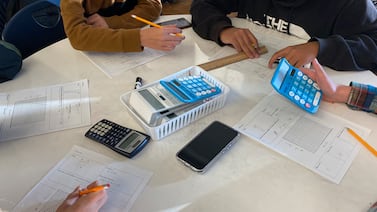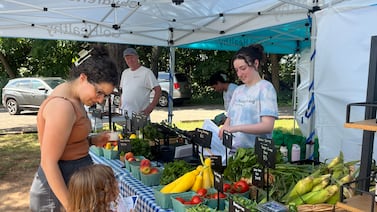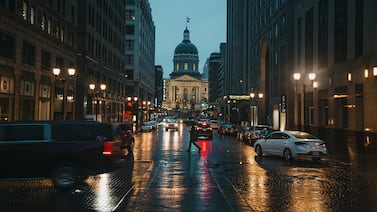Two Indianapolis school leaders warned Thursday that the costs to reopen schools in the fall will likely exceed what their districts received in federal aid to pay for additional safety precautions against the coronavirus.
Indianapolis Public Schools, for example, used its federal relief money to buy devices for each student and recently spent nearly $1 million on hand sanitizer, Superintendent Aleesia Johnson said in a virtual town hall on reopening schools.
“The reality is, I think, that what we are going to end up spending will likely be more than what has currently been allocated,” Johnson said.
Johnson, Wayne Township Superintendent Jeff Butts, and the mayor’s charter school director Patrick McAlister discussed the complicated factors for reopening in Thursday’s virtual event hosted by the Indy Chamber. While they acknowledged many uncertainties and said they are working on multiple learning options, Johnson and Butts said they hoped to release their districts’ reopening plans by early July.
Educators across the state have raised the issue of cost as a major hurdle to reopening. That’s a key reason behind Gov. Eric Holcomb’s decision this week to maintain state funding levels for schools despite seeking other budget cuts, which McAlister said was a win for local schools.
Some educators are hoping for another round of federal relief dollars. McAlister also said he’s advising charter and private schools to look for outside resources such as grants or donations.
The leaders said their first priority is the safety of students and families, but they believe in-person learning is the most effective means of instruction.
“We are set up best to do that in the physical learning environment,” Johnson said.
But they aren’t sure if school buildings will be allowed to open completely, and they want to give families the flexibility to choose virtual. A potential compromise could be a hybrid model, where some students would learn in-person and others would learn at home. Johnson and Butts said their districts are spending the most time planning for this option because it would be the most complex to pull off.
Virtual instruction would need to match the scope, sequence, and pacing of in-person lessons so that students can transition smoothly when they return, Butts said.
One of the most complicated logistical challenges schools face centers around transportation. With social distancing, Johnson said a school bus that usually transports more than 40 students could only accommodate about 12.
“That dramatically reduces the number of students that can actually get to school every day,” she said.
IPS is surveying families to get a sense of how many would be able to bring their children to school themselves.
In addition to addressing logistical issues, schools expect to account for a learning gap due to the disruption caused by classrooms closing in the spring. Johnson said IPS is thinking about how to embed last quarter’s standards into the first four to six weeks of the fall semester, while balancing students’ emotional and mental health needs.
“We know our students are coming to us having experienced, like we have, a very traumatic event that we are still in the midst of,” she said.
Wayne Township schools are focusing on a two-year strategy to catch students up.
The district is considering offering standardized tests such as IREAD 3, a literacy exam that was canceled this year, to get a sense of where students are, Butts said.
The school leaders said they hope to improve virtual learning this fall based on the lessons they learned in the spring.
“The virtual learning environment at home in this next year will look dramatically different than it did the last three months of this school year because of what we’ve learned and what we’re putting in place,” Butts said.
IPS will be able to offer every student a device for virtual learning in the fall, addressing a major barrier. In the spring, Johnson said the district only had enough devices for one out of every three students. IPS is also working to ensure students have internet access at home, she said.
McAlister’s key takeaway from the spring was that some schools are more prepared than others to adapt to distance learning.
“We are all in the same storm, but we start off in different ships,” he said.





